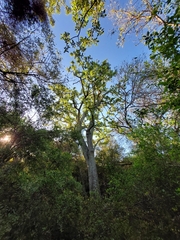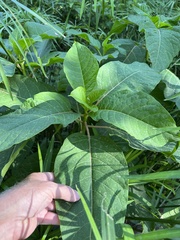©Tomás Tamagno, some rights reserved (CC-BY)
©Horacio Sirolli, some rights reserved (CC-BY-NC)
©Cory Whitney, some rights reserved (CC-BY-NC)
©Cory Whitney, some rights reserved (CC-BY-NC)
©Luis Prevedel, some rights reserved (CC-BY-NC)
©Luis Prevedel, some rights reserved (CC-BY-NC)
©Luis Prevedel, some rights reserved (CC-BY-NC)
©Luis Prevedel, some rights reserved (CC-BY-NC)
©Luis Prevedel, some rights reserved (CC-BY-NC)
©miyamcleod, some rights reserved (CC-BY-NC)
©Eduardo Luis Beltrocco, some rights reserved (CC-BY-NC)
©Eduardo Luis Beltrocco, some rights reserved (CC-BY-NC)
©Eduardo Luis Beltrocco, some rights reserved (CC-BY-NC)
©Eduardo Luis Beltrocco, some rights reserved (CC-BY-NC)
©Kevin Cornwall, some rights reserved (CC-BY-NC)
©Tomás Carranza Perales, some rights reserved (CC-BY)
©James Wetterer, some rights reserved (CC-BY-NC)
©Facundo Varela Barros, some rights reserved (CC-BY-NC)
©Micael De Bona, some rights reserved (CC-BY-NC)
©Micael De Bona, some rights reserved (CC-BY-NC)
©Micael De Bona, some rights reserved (CC-BY-NC)
©Micael De Bona, some rights reserved (CC-BY-NC)
©Micael De Bona, some rights reserved (CC-BY-NC)
©Micael De Bona, some rights reserved (CC-BY-NC)
©Tomás Tamagno, some rights reserved (CC-BY)
©Tomás Tamagno, some rights reserved (CC-BY)
©demianlescano, some rights reserved (CC-BY-NC)
©Tomás Tamagno, some rights reserved (CC-BY)
©Tomás Tamagno, some rights reserved (CC-BY)
©embrenhar, some rights reserved (CC-BY-NC)
©Eduardo Luis Beltrocco, some rights reserved (CC-BY-NC)
©Eduardo Luis Beltrocco, some rights reserved (CC-BY-NC)
©Eduardo Luis Beltrocco, some rights reserved (CC-BY-NC)
©Eduardo Luis Beltrocco, some rights reserved (CC-BY-NC)
©Eduardo Luis Beltrocco, some rights reserved (CC-BY-NC)
©Tomás Tamagno, some rights reserved (CC-BY)
©Tomás Tamagno, some rights reserved (CC-BY)
©Tomás Tamagno, some rights reserved (CC-BY)
©Tomás Tamagno, some rights reserved (CC-BY)
©Tomás Tamagno, some rights reserved (CC-BY)
©Enrique Cenoz, some rights reserved (CC-BY-NC)
©Enrique Cenoz, some rights reserved (CC-BY-NC)
©Enrique Cenoz, some rights reserved (CC-BY-NC)
©Enrique Cenoz, some rights reserved (CC-BY-NC)
©kenbehrens, some rights reserved (CC-BY-NC)
©kenbehrens, some rights reserved (CC-BY-NC)
©Eduardo Luis Beltrocco, some rights reserved (CC-BY-NC)
©Eduardo Luis Beltrocco, some rights reserved (CC-BY-NC)
©Eduardo Luis Beltrocco, some rights reserved (CC-BY-NC)
©Eduardo Luis Beltrocco, some rights reserved (CC-BY-NC)
©Eduardo Luis Beltrocco, some rights reserved (CC-BY-NC)
©Tomás Tamagno, some rights reserved (CC-BY)
©Lucía, some rights reserved (CC-BY-NC)
©Eduardo Luis Beltrocco, some rights reserved (CC-BY-NC)
©anura, some rights reserved (CC-BY-NC)
©anura, some rights reserved (CC-BY-NC)
©anura, some rights reserved (CC-BY-NC)
©Eduardo Luis Beltrocco, some rights reserved (CC-BY-NC)
©Eduardo Luis Beltrocco, some rights reserved (CC-BY-NC)
©sgplantsanimalsinsects, some rights reserved (CC-BY-NC)
©sgplantsanimalsinsects, some rights reserved (CC-BY-NC)
©silenziu, some rights reserved (CC-BY-NC)
©silenziu, some rights reserved (CC-BY-NC)
©Tomás Tamagno, some rights reserved (CC-BY)
©Tomás Tamagno, some rights reserved (CC-BY)
©mathiasiglesias, some rights reserved (CC-BY-NC)
©mathiasiglesias, some rights reserved (CC-BY-NC)
©mathiasiglesias, some rights reserved (CC-BY-NC)
©mathiasiglesias, some rights reserved (CC-BY-NC)
©mathiasiglesias, some rights reserved (CC-BY-NC)
©mathiasiglesias, some rights reserved (CC-BY-NC)
©mathiasiglesias, some rights reserved (CC-BY-NC)
©Sebastián, some rights reserved (CC-BY-NC)
©Sebastián, some rights reserved (CC-BY-NC)
©Sebastián, some rights reserved (CC-BY-NC)
©Daniel Mederer, some rights reserved (CC-BY-NC)
©Daniel Mederer, some rights reserved (CC-BY-NC)
©Daniel Mederer, some rights reserved (CC-BY-NC)
©Daniel Mederer, some rights reserved (CC-BY-NC)
©Daniel Mederer, some rights reserved (CC-BY-NC)
©Jens-Christian Svenning, some rights reserved (CC-BY)
©Leandro Segovia, some rights reserved (CC-BY-NC)
©Leandro Segovia, some rights reserved (CC-BY-NC)
©Leandro Segovia, some rights reserved (CC-BY-NC)
©Leandro Segovia, some rights reserved (CC-BY-NC)
©Elizabeth.6919, some rights reserved (CC-BY-NC)
©Elizabeth.6919, some rights reserved (CC-BY-NC)
©Namhla, some rights reserved (CC-BY-NC)
©Namhla, some rights reserved (CC-BY-NC)
©Namhla, some rights reserved (CC-BY-NC)
©Pablo Preliasco, some rights reserved (CC-BY-NC)
©Elizabeth.6919, some rights reserved (CC-BY-NC)
©Elizabeth.6919, some rights reserved (CC-BY-NC)
©Elizabeth.6919, some rights reserved (CC-BY-NC)
©Catherine Parker, some rights reserved (CC-BY-NC)
©Catherine Parker, some rights reserved (CC-BY-NC)
©Catherine Parker, some rights reserved (CC-BY-NC)
©Catherine Parker, some rights reserved (CC-BY-NC)
©Hugo, some rights reserved (CC-BY-NC)
©Hugo, some rights reserved (CC-BY-NC)
©Martin Bennett, some rights reserved (CC-BY-NC)
©Nicole Loebenberg, some rights reserved (CC-BY-NC)
©Malena Lorente, some rights reserved (CC-BY)
©Malena Lorente, some rights reserved (CC-BY)
©Anabela Plos, some rights reserved (CC-BY)
©markus lilje, some rights reserved (CC-BY-NC-ND)
©Lucila Boasso, some rights reserved (CC-BY-NC)
©Lucila Boasso, some rights reserved (CC-BY-NC)
©Lucila Boasso, some rights reserved (CC-BY-NC)
©Lorena Zapata, some rights reserved (CC-BY-NC)
©milena_samantha, some rights reserved (CC-BY-NC)
©milena_samantha, some rights reserved (CC-BY-NC)
©Margaret Burger, some rights reserved (CC-BY-SA)
©swafford, some rights reserved (CC-BY-NC)
©Nathaniel Xggum, some rights reserved (CC-BY-NC)
©Gustavo Herrera, some rights reserved (CC-BY-NC)
©Nathaniel Xggum, some rights reserved (CC-BY-NC)
©Blas Fandiño, some rights reserved (CC-BY-NC)
©graham_g, some rights reserved (CC-BY-NC)
©graham_g, some rights reserved (CC-BY-NC)
©graham_g, some rights reserved (CC-BY-NC)
©Feli, some rights reserved (CC-BY-NC)
©Blas Fandiño, some rights reserved (CC-BY-NC)
©Jeremias Ponte, some rights reserved (CC-BY-NC)
©diego, some rights reserved (CC-BY-NC)
©diego, some rights reserved (CC-BY-NC)
©diego, some rights reserved (CC-BY-NC)
©Al Schotz, some rights reserved (CC-BY-NC)
©Guardaparques Laguna Garzón, some rights reserved (CC-BY-NC-ND)
©el-naturalista, some rights reserved (CC-BY-NC)
©Lucas, some rights reserved (CC-BY-NC)
©Antonela Boggian, some rights reserved (CC-BY-NC)
©vinicius_s_domingues, some rights reserved (CC-BY-NC)
©vinicius_s_domingues, some rights reserved (CC-BY-NC)
©vinicius_s_domingues, some rights reserved (CC-BY-NC)
©panama_joe, some rights reserved (CC-BY-NC)
©mila_budden, some rights reserved (CC-BY-NC)
©mila_budden, some rights reserved (CC-BY-NC)
©mila_budden, some rights reserved (CC-BY-NC)
©Yasmin Hernández, some rights reserved (CC-BY-NC)
©Yasmin Hernández, some rights reserved (CC-BY-NC)
©Joaquín Lapetina, some rights reserved (CC-BY-NC)
©Craig Peter, some rights reserved (CC-BY-NC)
©Santiago, some rights reserved (CC-BY-NC)
©Santiago, some rights reserved (CC-BY-NC)
©Santiago, some rights reserved (CC-BY-NC)
©aargon, some rights reserved (CC-BY-NC)
©Danielly Cortes, some rights reserved (CC-BY-NC)
©Danielly Cortes, some rights reserved (CC-BY-NC)
©Bruce Esau, some rights reserved (CC-BY-NC)
©Tomás Tamagno, some rights reserved (CC-BY)
©Tomás Tamagno, some rights reserved (CC-BY)
©aargon, some rights reserved (CC-BY-NC)
©Christian Gilli, some rights reserved (CC-BY-NC)
©Leonardo Adrián LEIVA, some rights reserved (CC-BY-NC)
©Craig Peter, some rights reserved (CC-BY-NC)
©Christian Gilli, some rights reserved (CC-BY-NC)
©Christian Gilli, some rights reserved (CC-BY-NC)
©Christian Gilli, some rights reserved (CC-BY-NC)
©Christian Gilli, some rights reserved (CC-BY-NC)































































































































































